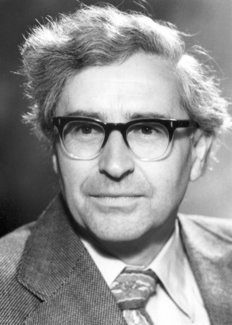Antony Hewish facts for kids
Quick facts for kids
Antony Hewish
FRS FInstP
|
|
|---|---|
 |
|
| Born | 11 May 1924 Fowey, Cornwall, England
|
| Died | 13 September 2021 (aged 97) |
| Nationality | British |
| Education | King's College, Taunton |
| Alma mater | University of Cambridge (BA, PhD) |
| Known for | Pulsars |
| Spouse(s) |
Marjorie Richards
(m. 1950) |
| Awards |
|
| Scientific career | |
| Fields | Radio astronomy |
| Institutions |
|
| Thesis | The fluctuations of galactic radio waves (1952) |
| Doctoral students | Jocelyn Bell Burnell |
Antony Hewish (born May 11, 1924, died September 13, 2021) was a famous British scientist. He was a radio astronomer. This means he studied space using radio waves.
In 1974, he won the Nobel Prize in Physics. He shared this award with fellow astronomer Martin Ryle. They won for their important work. This included Hewish's key role in finding pulsars. Pulsars are like cosmic lighthouses. They send out beams of radio waves.
Hewish also received the Eddington Medal in 1969. This award came from the Royal Astronomical Society.
Contents
Early Life and School
Antony Hewish went to King's College, Taunton for his early education. He then started studying at the University of Cambridge. His studies were paused because of the Second World War.
During the war, he worked on special projects. He helped with radar technology for aircraft. After the war, in 1946, he went back to Cambridge. He finished his degree and started advanced studies. He joined Martin Ryle's research team.
For his PhD, Hewish studied how radio waves from space flicker. This flickering is caused by gas and dust in space. He made new ways to observe and understand this effect. He earned his PhD in 1952.
Discovering Pulsars
Hewish had an idea for a new type of radio telescope. It would be very large and could quickly scan the sky. He wanted to use it to study how radio waves from space flicker. This flickering helps scientists learn about space gas.
In 1965, he got money to build his telescope. It was called the Interplanetary Scintillation Array. It was built near Cambridge and finished in 1967.
One of Hewish's students was Jocelyn Bell Burnell. She helped build the telescope. Her job was to look at the signals it received. Bell soon found a strange radio signal. It was pulsing very regularly.
Hewish first thought it might be radio interference from Earth. But Bell showed that the signal came from a fixed spot in space. This meant it was not from Earth. This signal turned out to be the first pulsar ever found.
The scientific paper announcing this amazing discovery had five authors. Antony Hewish's name was listed first. Jocelyn Bell's name was second.
Nobel Prize and Later Work
In 1974, Antony Hewish and Martin Ryle won the Nobel Prize in Physics. They were honored for their work on radio telescopes. Hewish was specifically recognized for his big part in discovering pulsars.
Some people felt that Jocelyn Bell Burnell should have also received the Nobel Prize. However, Bell herself said that Nobel Prizes are usually not given to students. She believed her case was not special enough. Other scientists agreed that Hewish was the main leader of the work. He invented the technique and led the team that made the discovery.
Hewish became a professor of radio astronomy in 1971. He worked at the Cavendish Laboratory until 1989. He also led the Mullard Radio Astronomy Observatory from 1982 to 1988.
He was involved with the Royal Institution in London. In 1965, he gave a famous Christmas Lecture there. He later gave other talks and became a professor at the Royal Institution in 1977.
Awards and Honors
Antony Hewish received many awards and honors. He had special degrees from six different universities. He was also a member of important science groups in Belgium, America, and India. The National Portrait Gallery has several pictures of him.
Some of his other awards include:
- Elected a Fellow of the Royal Society (FRS) in 1968.
- Eddington Medal from the Royal Astronomical Society (1969).
- Dellinger Gold Medal (1972).
- Albert A. Michelson Medal (1973, with Jocelyn Bell Burnell).
- Fernand Holweck Medal and Prize (1974).
- Nobel Prize for Physics (jointly) (1974).
- Hughes Medal from the Royal Society (1976).
- Elected a Fellow of the Institute of Physics (FInstP) in 1998.
Personal Life
Antony Hewish married Marjorie Elizabeth Catherine Richards in 1950. They had two children. Their son became a physicist, like his father. Their daughter became a language teacher. Antony Hewish passed away on September 13, 2021, at the age of 97.
His Views on Science and Belief
Antony Hewish believed that science and religion can go together. He wrote that some ideas in physics, like "virtual particles," seem strange. He felt that religious beliefs might also seem strange to common sense. But he thought that if even basic physics can be hard to understand, then deeper parts of our lives might also be beyond simple understanding.
See also
 In Spanish: Antony Hewish para niños
In Spanish: Antony Hewish para niños

